


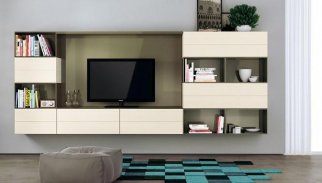
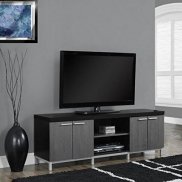
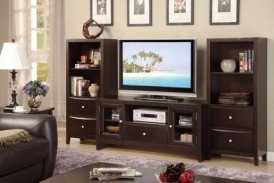
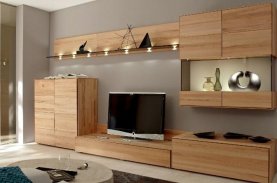

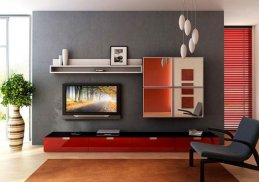
shelves tv designs

Description of shelves tv designs
Televisions are now much smaller than the old models which required a large and dedicated television stand. However, thanks to the arrival of flat screen technology it is now possible to place a television almost anywhere and even on shelves. Shelves have also developed in recent years with floating shelves become the more practical and fashionable shelving option.
Floating shelves use dry wall anchors which act as a pair of large pins which are fitten to a wall. A floating shelf will also come with two holes drilled into the back of the shelf which are used to slot the piece of wooden shelf onto the dry wall anchors.
Floating shelves are almost always constructed from wood with oak and pine being the most popular options. The use of television shelves as grown in popularity in recent years thanks to people now using their kitchens and dining room as entertainment rooms. Along with peoples living standards improving to a point which enables people to now afford multiple televisions throughout the home.
More and more people are now taking up cookery as a hobby or passion with an ever increasing number of people using cookery and television programmes instead of traditional cookery books. Therefore it is important that people have access to a television within their kitchen. A need which can be met by placing a television on a floating shelf in order to maintain the space necessary for mixing and preparing the ingredients.
In summary, with televisions become increasingly thinner thanks to flat screen television we can now present televisions using a shelf. The most stylish shelf is without question a floating shelf. The best material to use is oak or pine. Along with using television shelves in the living room they can also be used in the dining room, kitchen and even the bedroom.


























